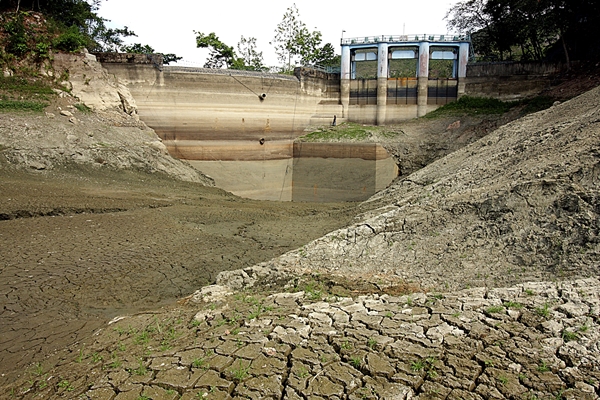Under the shadow of hotels and resorts in barangay Punta Engaño in Lapu Lapu City, residents struggle with dry water faucets because of low water pressure from the Metropolitan Cebu Water District (MCWD).
Large blue water barrels line the streets in Punta Engaño, where a resort hotel starts hosting today till Sunday the World Economic Forum’s Open Collaboration with East Asia New Champions 2014 (OCEAN 14) summit.
The Movenpick resort has its own water treatment plant and captures rain water for a sustainable supply.
But outside, in the barangay, ordinary residents have to make do with much less.
One of the residents, Dennis Camay, said their water problem started six months ago, when they no longer had 24-hour supply. He said that they barely had water for six hours, and suffered low water pressure .
This week, not a drop of water came out from their faucets.
“We waited late every night until dawn for water, but there was no single drop coming out from the faucet,” said Camay.
Marcela Talinting, another resident, said they have learned to recycle water and conserve.
“We make sure that we use water well. What we use in doing the laundry, we reuse to cleaning our comfort room. The water from washing the dishes is also being used to water the plants,” said Talinting.
According to MCWD Public Affairs Officer, Charmaine Rodriguez-Kara, Punta Engaño and other coastal barangays in Lapu-Lapu City are among the areas affected by low supply. She attributed the shortage to the dry weather and increasing demand.
Also in Cebu City
Intermittent water supply is also experienced in elevated and interior parts of barangays Lahug, Talamban, sitio Banawa, Oprra in Cebu City.
Barangays Tabunok and Lagtang in Talisay City, some areas in Mandaue City are also experiencing a water shortage.
Kara advised consumers to store water during off-peak hours.
“We appeal to the affected consumers for understanding and to continue storing water from 10PM onwards,” Kara said.
The water deficiency has more than doubled since Thursday. They used to have a production deficit of 5,000 to 6,000 cubic meters, but as of Thursday, the deficit reached 13,000 cubic meters. Aside from diminishing supply from the Buhisan Dam, several surface water and ground water sources have dried up since March.
The tourism industry in Lapu-Lapu City will feel the effects, said CCCI former president Lito Maderazo. He said a water shortage is harder to solve than brownouts. “No problem with big establishments because they have water recycling facilities. If every household recycles water, we can go far,” said Maderazo.
Disclaimer: The comments uploaded on this site do not necessarily represent or reflect the views of management and owner of Cebudailynews. We reserve the right to exclude comments that we deem to be inconsistent with our editorial standards.

